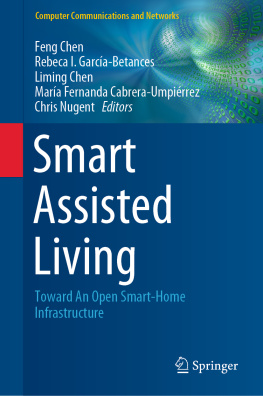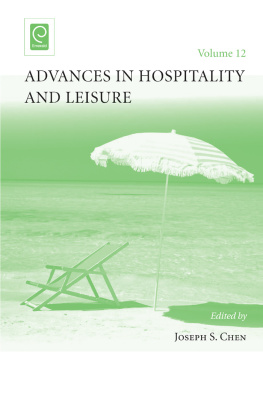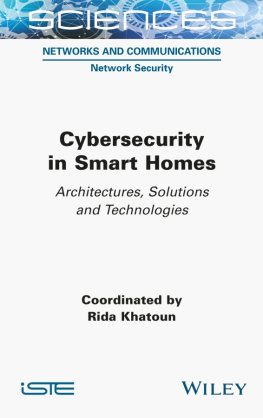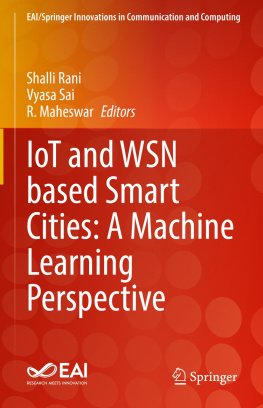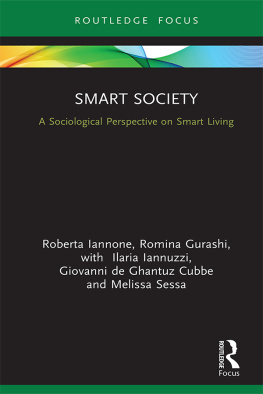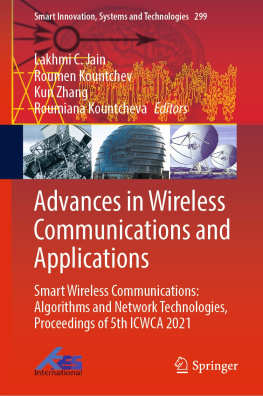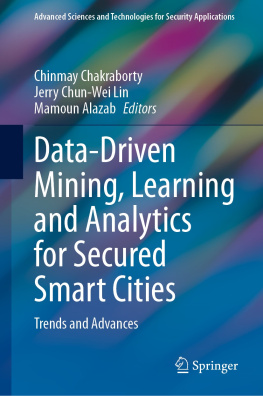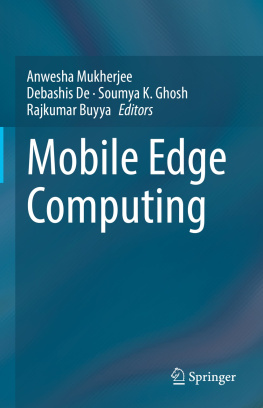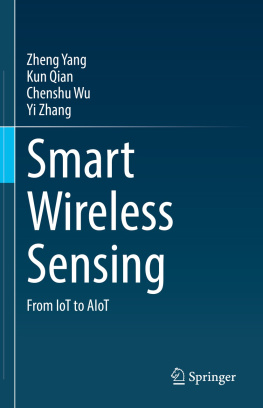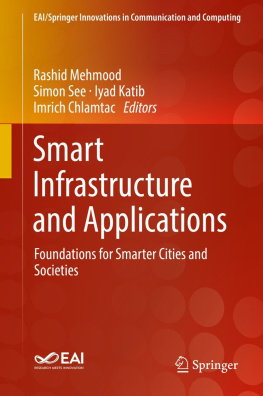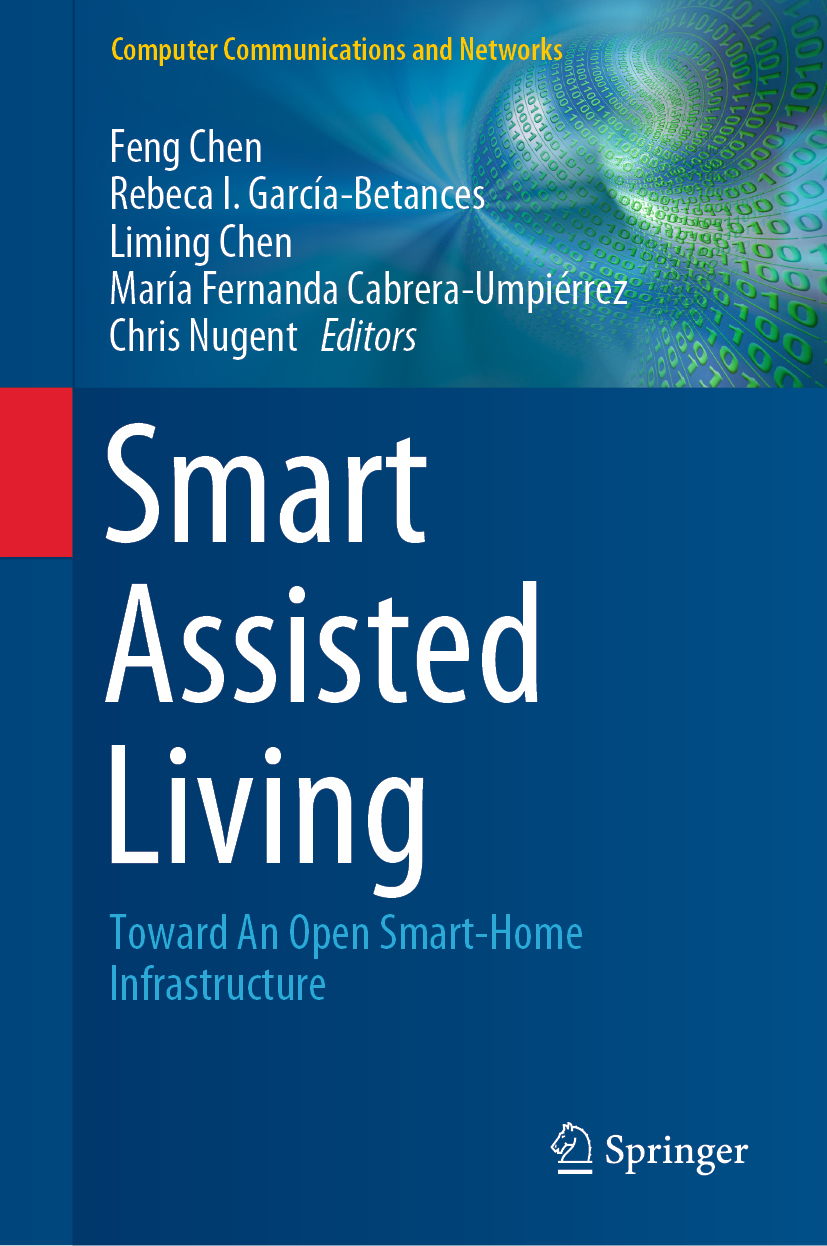Computer Communications and Networks
Series Editors
Jacek Rak
Department of Computer Communications, Faculty of Electronics, Telecommunications and Informatics, Gdansk University of Technology, Gdansk, Poland
A. J. Sammes
Cyber Security Centre, Faculty of Technology, De Montfort University, Leicester, UK
Editorial Board
Burak Kantarci
School of Electrical Engineering and Computer Science, University of Ottawa, Ottawa, ON, Canada
Eiji Oki
Graduate School of Informatics, Kyoto University, Kyoto, Japan
Adrian Popescu
Department of Computer Science and Engineering, Blekinge Institute of Technology, Karlskrona, Sweden
Gangxiang Shen
School of Electronic and Information Engineering, Soochow University, Suzhou, China
The Computer Communications and Networks series is a range of textbooks, monographs and handbooks. It sets out to provide students, researchers, and non-specialists alike with a sure grounding in current knowledge, together with comprehensible access to the latest developments in computer communications and networking.
Emphasis is placed on clear and explanatory styles that support a tutorial approach, so that even the most complex of topics is presented in a lucid and intelligible manner.
More information about this series at http://www.springer.com/series/4198
Editors
Feng Chen , Rebeca I. Garca-Betances , Liming Chen , Mara Fernanda Cabrera-Umpirrez and Chris Nugent
Smart Assisted Living
Toward An Open Smart-Home Infrastructure
Editors
Feng Chen
School of Computer Science & Informatics, De Montfort University, Leicester, UK
Rebeca I. Garca-Betances
Life Supporting Technologies, Universidad Politecnica de Madrid, Madrid, Spain
Liming Chen
School of Computing, Ulster University, Belfast, UK
Mara Fernanda Cabrera-Umpirrez
Life Supporting Technologies, Universidad Politecnica de Madrid, Madrid, Spain
Chris Nugent
School of Computing, Ulster University, Newtownabbey, UK
ISSN 1617-7975 e-ISSN 2197-8433
Computer Communications and Networks
ISBN 978-3-030-25589-3 e-ISBN 978-3-030-25590-9
https://doi.org/10.1007/978-3-030-25590-9
Springer Nature Switzerland AG 2020
This work is subject to copyright. All rights are reserved by the Publisher, whether the whole or part of the material is concerned, specifically the rights of translation, reprinting, reuse of illustrations, recitation, broadcasting, reproduction on microfilms or in any other physical way, and transmission or information storage and retrieval, electronic adaptation, computer software, or by similar or dissimilar methodology now known or hereafter developed.
The use of general descriptive names, registered names, trademarks, service marks, etc. in this publication does not imply, even in the absence of a specific statement, that such names are exempt from the relevant protective laws and regulations and therefore free for general use.
The publisher, the authors and the editors are safe to assume that the advice and information in this book are believed to be true and accurate at the date of publication. Neither the publisher nor the authors or the editors give a warranty, expressed or implied, with respect to the material contained herein or for any errors or omissions that may have been made. The publisher remains neutral with regard to jurisdictional claims in published maps and institutional affiliations.
This Springer imprint is published by the registered company Springer Nature Switzerland AG
The registered company address is: Gewerbestrasse 11, 6330 Cham, Switzerland
Preface
Assisted living in Smart Home (SH) can change the way of caring the older people and manage their conditions and maintain their well-being. This will support the ageing population to live longer independently and to enjoy the comfort and quality of life in their private environments. With the increasing ageing population and the growing demand on novel healthcare models, research on SH for independent living, self-management and well-being has intensified over the last decade coupled by the wide availability of affordable sensing and effective processing technologies. Yet it still remains a challenge to develop and deploy SH solutions that can handle everyday life situations and support a wide range of users and care applications.
The challenge to the rapid development and deployment of SH solutions essentially arises from the technology complexity and application diversity of the SH field. SH is a highly multidisciplinary research field involving a number of disciplinary areas and topics. To be successful any SH solution requires seamless technology integration and inputs from multiple subject areas. Researchers working in different technological disciplines usually have little understanding and appreciation of each others research issues. There is little consideration of the big picture, i.e. integration and interoperability. This leads to fragmented self-contained technologies, which are not suitable to serve as an integral part of a technology infrastructure to solve bigger complex problems. SH accommodates a wide range of applications, and each of them may require different sensors, data processing methods and intervention mechanisms. As technologies are developed in a specific application context, the resulting technology infrastructures are usually ad hoc, i.e. domain dependent, application specific, difficult to be applied to solve problems of a different application characteristic. This suggests that an alternative to a one-size-fits-all approach to develop SH technology infrastructure is needed in order to advance the state-of-the-art. SH technologies must be interoperable for seamless technology integration and rapid application development, and adaptable for easy deployment and management, achieved by thorough testing and validation in multiple application scenarios. In addition to multidisciplinarity and application heterogeneity, SH is also a field involving multiple stakeholders, e.g. researchers, technology and solution developers, service providers, carers and end users. Addressing the needs of a SH application solely from a single stakeholders perspective is insufficient to deliver the right solution for the right users. Any best practices should be built upon effective communication and sharing of knowledge, and consensus of views and needs between stakeholders in the value chain.
As IoT industry advances, SH can leverage from cheap ubiquitous sensors, interconnected smart objects, packaged with robust context inference and interaction techniques so that SH technologies will be adaptive to fit versatile living environments, and interoperable for heterogeneous applications. In addition, the service-oriented cloud-based system architecture will support reconfiguration and modular design that is essential to empower care providers to customise their solutions. An easy-to-use open technology infrastructure which provides validated technology components and platforms built upon them is highly demanded. The technologies in the infrastructure should be modular and extensible and can be reused and automatically configured and integrated into a service infrastructure to facilitate wider adoption. By using this infrastructure, developers can rapidly develop functionality and applications, and care institutions and the elderly themselves could choose and configure solutions according to their needs.

